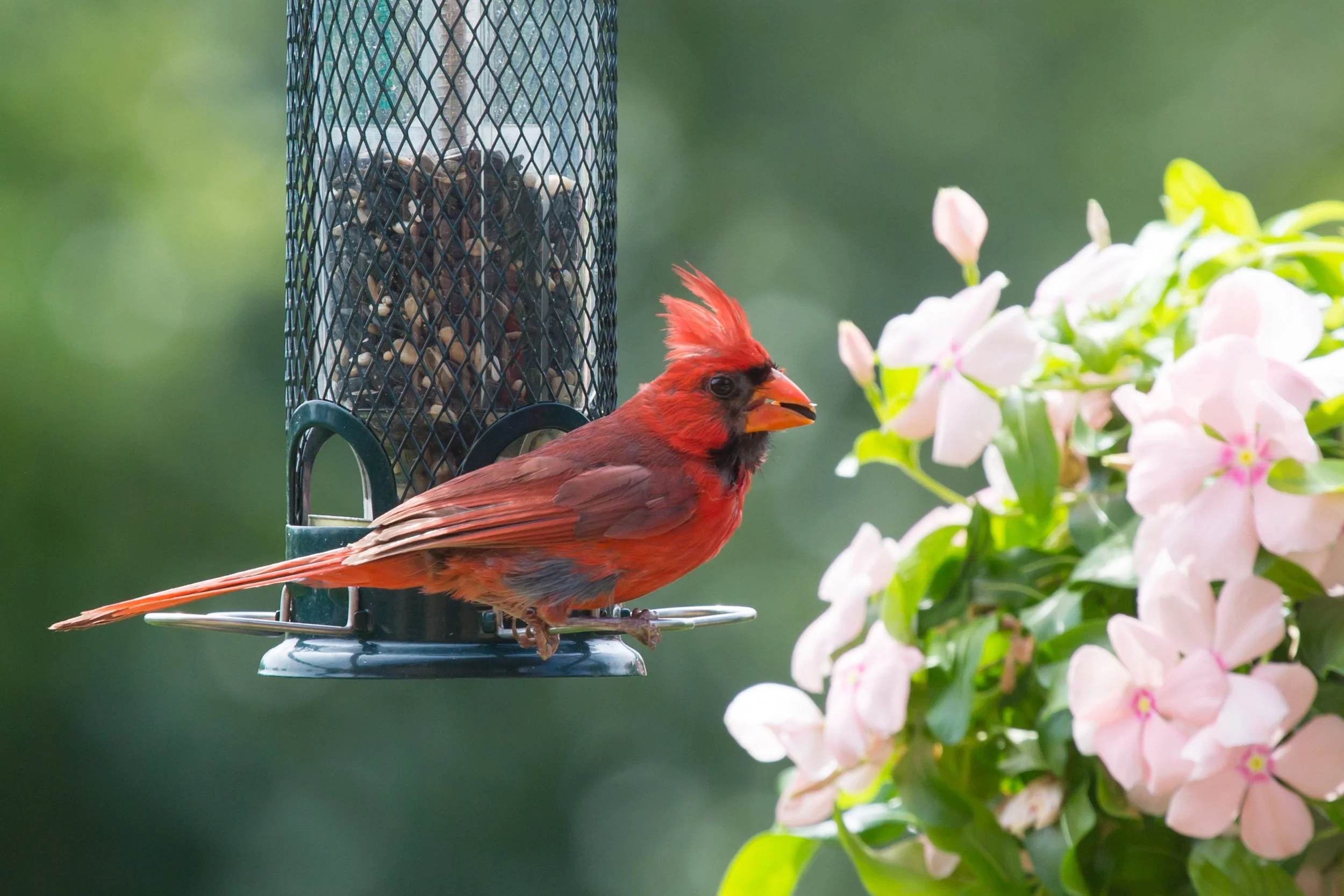Healthy Treats to Attract Birds
If you want to attract wild birds to your back yard, there are three basics: shelter, water, and food.
But if you want to become the most popular house on the block, offering a wide variety of foods is especially effective. A great way to invite new and different birds to the backyard is to broaden the menu.
There are dozens of blends of bird seed available and experimenting with these can bring new and different birds to your feeders. Try blends with whole nuts or dried fruits and see who comes to visit. Make sure your feeders are suited to the size of the seeds, so the feed is easily accessible through the holes. Some species won’t come to hanging feeders, but you can accommodate them with a platform feeder or by putting seed directly on the ground. Rake or sweep regularly, so that the seed doesn’t attract unwanted four-legged visitors.
Avoid offering human snacks such as salty chips, sugary sweets, and bread. These offer little nutrition and frequently include ingredients that are unhealthy for wild creatures.
Instead, offer fresh fruit such as watermelon, oranges, diced apples, and berries. You can also offer dried fruit like cranberries and cherries, along with raisins and currants. Putting out a small amount of grape jelly may attract brightly colored orioles in your area but look for jellies that are made without high-fructose corn syrup and with a low (or no) sugar content. Make sure the container of jelly won’t allow the orioles to get sticky, because sticky feathers can be deadly for birds. You can also offer sugar water in an oriole feeder. Use the same recipe as you would for hummingbirds: 1 part sugar to 4 parts water and no food coloring.
Mealworms are another fun way to attract some different birds such as bluebirds. You can buy live mealworms at specialty stores or dried mealworms at most places that sell wild bird seed.
Most people think of suet as a winter food, because the fat and calories help birds survive the cold and snowy months. However, you can offer it year-round. No-melt suet is a good alternative in the summer, and it provides extra nutrition to nesting birds and hatchlings.
Pressed seed is another convenient option that is fun and easy to use. Pressed seed products come in several shapes and sizes, including bells, rectangles (seed cakes), and circles (snack stacks). Snack stacks can be hung on a special snack stack feeder and seed cakes can be hung in a seed cake feeder.
Early summer is a wonderful time for watching wild birds in your yard. To ensure that you’re providing a safe habitat for them, keep bird feeders clean and the birdbath full of fresh water and keep your cats indoors.


